Higher Performance Insights | ENROLLMENT ≠ ENGAGEMENT: The Sobering Cost of Enrolling Students Then Losing Them
33% of Your Revenue is Walking Out the Door
- Revenue Impact: A 33% student attrition rate within three years represents millions in lost tuition revenue and potential alumni giving.
- Competitive Advantage: Institutions prioritizing engagement over enrollment see 23% higher completion rates and improved rankings
- Resource Efficiency: Retaining existing students costs 3- 5x less than recruiting new ones
- Reputational ROI: Student engagement directly correlates with institutional reputation metrics and positive word-of-mouth
The Enrollment vs. Engagement Challenge
Campus executive teams across the country obsess over one metric above all others: enrollment numbers. They celebrate when headcounts rise and panic when they fall. But here's the fiscal reality that most leaders won't acknowledge: getting students in the door is not the real financial challenge in education today.
The actual crisis? Students are leaving at alarming rates, and institutional leaders would rather invest in another expensive CRM system than confront the uncomfortable truth about why. Each 1% improvement in retention translates to approximately $300,000 to $500,000 in preserved revenue for a mid-sized institution.
The Data Behind the Dropout Crisis
The numbers tell a devastating story that translates directly to institutional financial health:
- According to the American Institutes for Research, on average, 23% of students don't return for their sophomore year, and an additional 10% leave before their junior year, resulting in a staggering 33% dropout rate over the first three years.
- The U.S. News data reveals that "in many cases, 1 in 3 first-year students or more won't make it back for their second year" with reasons ranging "from family problems and loneliness to academic struggles and a lack of money."
- Even at community colleges, which have seen improvements, retention rates hover around 55%, meaning nearly half of students drop out after their first year.
For institutional advancement professionals, this represents not just lost tuition but also diminished lifetime giving potential, as non-completers are 76% less likely to become donors.
The Uber Education: Real-World Impact on Institutional Reputation
Let me share something that happens with alarming regularity. In my work, I travel to dozens of campuses each week to serve their leaders and teams. During these travels, I spend considerable time in the back of Uber and Lyft rides. I've developed a habit of asking drivers if they know much about the campus I'm visiting.
Consistently—and disturbingly—drivers tell me they used to attend that very institution. When I ask why they left, about half cite straightforward economic reasons: "I couldn't afford it." But the other half? Their responses represent walking negative advertisements for your institution:
"I felt invisible there." "I was just a number." "The faculty didn't treat me with respect." "Nobody seemed to care if I showed up or not."
What's most telling? These former students are literally driving others to the very campuses they abandoned. In marketing terms, this represents thousands of negative brand impressions that no social media campaign can overcome.
The Structural Challenge: Institutional Inertia
Why do institutions continue pouring resources into enrollment while neglecting retention? The answer lies in structural challenges and institutional inertia that affect even the most well-intentioned campus leaders.
The enrollment-fixated culture persists because it aligns with traditional budget cycles and reporting structures. Enrollment creates immediate revenue and impressive statistics for board meetings. It doesn't require the cross-departmental coordination and long-term metrics that effective engagement strategies demand.
When retention initiatives require fundamental reassessment of how institutions operate—from teaching methods to student support systems—organizational inertia often redirects focus back to the familiar territory of enrollment metrics.
The emotional and financial investment in "round-the-clock caffeine-infused enrollment hustlers" represents a deeply ingrained institutional tradition that, while understandable, is increasingly at odds with financial sustainability in today's competitive landscape.
The Empathetic Reality Check for Campus Professionals
Let's acknowledge a brutal truth: the structural challenges that create this situation are deeply entrenched and not easily dismantled. Decades of institutional history, financial models, and academic traditions have developed systems that naturally resist transformation.
This isn't about assigning blame to campus leaders. Those I serve genuinely care about student success but find themselves constrained by systems that measure and reward the wrong things. The enrollment-obsessed culture didn't develop overnight, and it won't be overturned with a single initiative or program.
What's encouraging, however, is that professionals who successfully lead engagement transformations report accelerated career advancement and professional recognition, as their institutions outperform peers on key metrics that boards and accreditors increasingly prioritize.
A Practical 3-Step Path Forward: Proven Approaches for Immediate Implementation
90-Day Quick Start Timeline
- Days 1-30: Audit existing engagement data sources and establish baseline metrics
- Days 31-60: Implement pilot engagement initiatives in the highest-attrition departments
- Days 61-90: Present initial findings to leadership with ROI projections
1. Establish Engagement as a Core Metric with Proven ROI
Real-world proof it works: Georgia State University transformed its retention rates by analyzing over 800 student data points to identify engagement risks early, helping more than 2,000 students stay on track annually. This initiative generated an additional $3 million in tuition revenue and significantly enhanced the institution's rankings.
5 Engagement KPIs That Predict Retention with 90% Accuracy:
- Learning management system activity (frequency and duration)
- Assignment completion rates
- Faculty interaction frequency
- Student service utilization
- Co-curricular participation
When restaurant chains receive poor customer satisfaction scores, they often overhaul their menus and retrain their staff. When airlines receive low Net Promoter Scores, executives face increased scrutiny from the board. Yet when students express disengagement through course evaluations or by leaving, we rarely see comparable institutional accountability. Implementing these metrics has provided advancement opportunities for forward-thinking professionals across institutions.
2. Realign Resources and Rewards for Career Advancement
Real-world proof it works: Purdue University's "Back a Boiler" income share agreement program directly aligns institutional financial incentives with student success—the university only succeeds when graduates succeed. Meanwhile, Arizona State University ties executive compensation partly to student progression rates, and leaders who implemented these approaches have seen significant professional advancement.
The evidence shows that professionals who champion engagement-centered initiatives are 40% more likely to advance to senior leadership positions within five years, as these initiatives deliver measurable institutional improvements that boards recognize and reward.
Executives who have implemented retention-based compensation models report that these approaches not only improve student outcomes but also enhance departmental collaboration and innovation, key skills that accelerate professional development.
3. Create Institutional Accountability for Engagement Excellence
Real-world proof it works: Amarillo College restructured its leadership around a "No Excuses" poverty initiative, making student success the primary institutional accountability metric. This resulted in a tripling of graduation rates within five years. This initiative earned the college the prestigious Aspen Rising Star award, garnering national recognition for the leadership team. Valencia College's similar approach helped them win the Aspen Prize for Community College Excellence, significantly enhancing the professional profiles of key administrators.
Institutions that implement engagement accountability frameworks see an average 12% improvement in key performance indicators within two years, creating tangible success metrics for professionals who champion these approaches.
The Transformative Opportunity for Institutional Advancement
The institutions consistently gaining market share in today's competitive higher education landscape share one characteristic: they've shifted from an enrollment-fixated culture to one that values engagement equally, unlocking substantial revenue preservation and enhancement.
This isn't just about boosting retention rates; it's also about enhancing overall customer experience. It's about strengthening institutional financial sustainability while fulfilling the core mission of higher education: transforming students' lives through meaningful learning experiences.
The most successful campus professionals of the next decade will be those who recognize that engagement metrics aren't just nice-to-have supplements to enrollment data—they're essential predictors of institutional viability.
It's not just good educational practice—it's a sound business strategy for the increasingly competitive education industry.
Implementation Resources
5 Key Engagement Metrics to Start Tracking Tomorrow:
- Student-faculty interaction frequency
- Learning management system engagement
- Participation in high-impact practices
- Sense of belonging indicators
- Academic performance progression
What will you do differently next quarter?
References:
- American Institutes for Research. (2023). The Overlooked Challenge of Second- to Third-Year Retention.
- Assunção, H., et al. (2020). University Student Engagement Inventory (USEI): Transcultural validity evidence across four continents. Frontiers in Psychology, 10, 1–12.
- Kahu, E. R. (2013). Framing student engagement in higher education. Studies in Higher Education, 38(5), 758-773.
- National Student Clearinghouse Research Center. (2024). Persistence and Retention.
- U.S. News & World Report. (2025). University Rankings by First-Year Retention Rate.
Help Spread the Word
If you found value in this post, we’d love your help spreading the word! Please consider sharing this on your favorite social media platform and tag Higher Performance Group and Dr. Joe Hill. Your support helps us reach and inspire more awesome people like you!
Like What You've Read?
Get practical, research-based ideas to Accelerate
Higher Team Performance delivered straight to your inbox every Tuesday.
More Blog Articles




